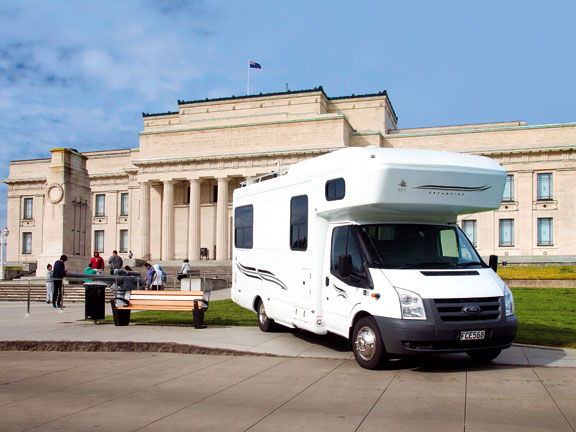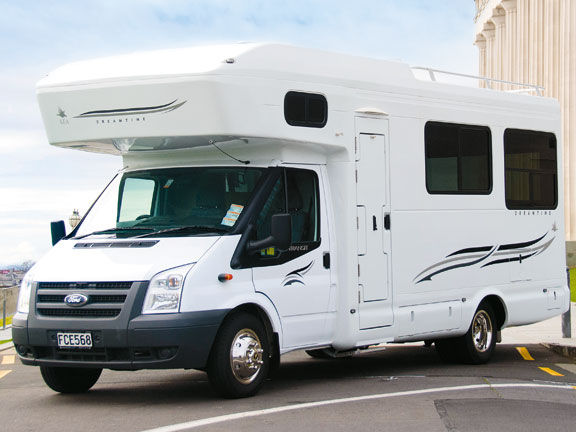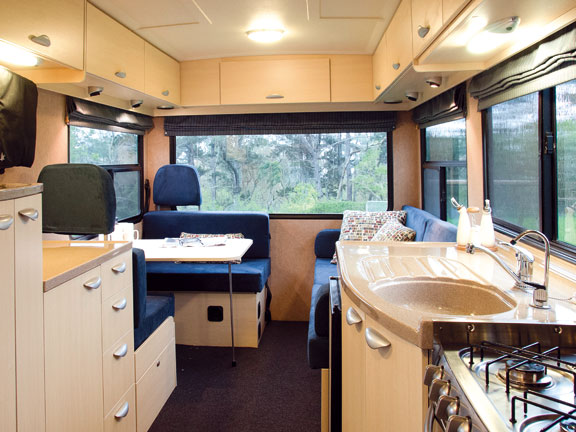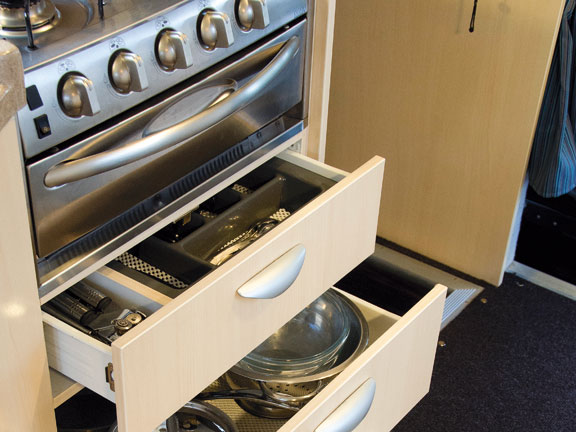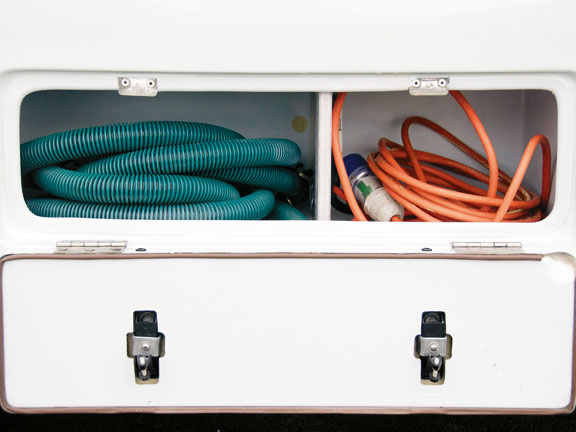You can find out a lot about an RV on display at a show. While you can learn a little by eavesdropping on conversations occurring outside the RV, it is when you get inside and sit quietly in a corner that you get the best insights.
Of all the comments I've heard over the years, the one that stands out for me involved KEA a motorhome.
"It's definitely a new one," said the woman as she lifted the lid on the stove.
"It's not, you know. My husband told me it's second-hand," said her friend.
"Oh, it couldn't possibly be a used one, there's not a mark on it. Look at the bench – not a scratch. Let's ask the salesman."
The salesman confirmed that the motorhome was nearly three years old and had travelled 100,000km.
"How do you do that?" the first woman asked. I recently went to the KEA plant in Albany, Auckland, to find out.
Tucked in a corner, separate from the RV Manufacturing Group facility, KEA Campers has a small team of tradespeople, whose sole responsibility is to refurbish motorhomes coming 'off-rental' and make them ready for sale. The team completes a 130-point checklist of items that must be brought up to standard before the vehicle is handed over to the sales department.
First, all panels – metal on the cab and fibreglass on the motorhome body – are checked and any dents and scratches are repaired and painted. The sealant in all bodywork joins is replaced. Next, a full mechanical service, including a complete oil and filter change, brake pads and rotors replaced and new house batteries fitted, is carried out.
Refurbishment inside is extensive. All bench tops are replaced. Any damaged furniture panels are removed and new ones fitted, as are any malfunctioning hatches, latches and catches. All plumbing and electrical circuits are checked and any faults remedied. Cushions, covers, drapes and blinds are cleaned or replaced as necessary and a new set of carpets are fitted. Final titivations include a full compliment of body stripes, a full set of shiny wheel trims, an electrical WOF, a vehicle COF, self-containment certification, vehicle registration and last but by no means least a three-year warranty.
"Our aim is to bring the RV back to as near to new standard as we can." says Steve Lane of KEA Campers. My sympathy went out to the lady at the show who thought she was in a new KEA motorhome. In some ways, she was!
The KEA Dreamtime I reviewed was a 2009 model, had travelled just a shade under 100,000km and was retailing for $119,500. Just like the one that astounded the lady at the show, this one was 'as-new' inside and out. Typically, it could have had around 60 to 70 hirers in its lifetime. Multiply that by the number of vehicles in the fleet times the number of years the company has been in business and it adds up to an enormous number of customers.
KEA has sought feedback on its hire experience from each one of them, learning much from this feedback and using it to improve their product: ensuring interior surfaces, carpets and upholstery fabrics are durable and easy to clean; providing a comprehensive range of eating and cooking utensils in drawers and racks that make them convenient to use and that protect them while travelling; overhead lockers with positive action hinges so they remain closed on the bumpiest roads; ensuring the TV is safe on its swinging arm bracket during transit by fitting a novel soft cover that clips to the wall; providing a decent-sized wardrobe in a convenient position; grouping the appliance controls – water heater, gas heater, TV remote, switchboard, battery and water tank monitors – together so they are easy to read and less likely to be overlooked.
Personal security of the occupants and their possessions has also been considered. Each vehicle has a safe large enough to secure a couple of laptops and other valuables. The access door has a separate security door which allows fresh air to flow into the motorhome, while denying undesirables entrance. There is a fire extinguisher mounted handy to the stove. All of these features are unobtrusive because they have been built into the design, not added as an afterthought.
Much glass surrounds you as you sit in the KEA – you can really enjoy your surroundings without taking a step outside. Standard colour scheme is cream and tan but the motorhome reviewed had a more formal dark blue theme.
The Dreamtime rear lounge is a variation from the norm, with a settee on the kerbside and a dinette on the driver's side. As an entertainment venue, it can accommodate four or five people in comfort. To the uninitiated, converting it for sleeping looks complicated but once you learn how, it's easy. There are three choices: a pair of single beds, a small double or a monster playpen-size double bed. If you are still bewildered, use the Luton bed over the cab. That way, you can leave the bed permanently made up.
The food preparation area is one of the standout features of the Dreamtime, with unencumbered bench space a metre or more long both sides of the centre aisle. Pots, pans cutlery and crockery are neatly housed in the drawers beneath the cooker, leaving a mass of cupboards, lockers and the wire drawer pantry for food and other cooking essentials. Note that the cooker has four gas hobs over a grill oven, not a full oven.
Motorhome hirers tend to overnight in campgrounds rather than freedom camp, so KEA installs 12V compressor fridges, rather than three-way (gas/230V/12V) fridges, which are the popular choice of most freedom campers. As Steve says, "We fit a solar panel system to recharge the batteries, so you won't run short of power to run the fridge in all but the gloomiest of weather." However, if you want a three-way fridge, KEA is happy to give you a quote to have one fitted.
The bathroom is the standard kiwi style: a fold-down basin below a wall cabinet above a bench-type Thetford toilet inside a shower stall, with a window for ventilation. There is a set of rails installed too, so the space can be used for drying clothes. The set-up is practical and easy to clean.
The KEA fibreglass motorhome body has evolved considerably since it was first launched a dozen or more years ago. There are no plant-on hatch surrounds of different hues; every opening is custom moulded. The main door is KEA designed and built. The aluminium frames of the glass windows are recessed flush with the side panels. It is strong durable body and still looks good, regardless of its age – I wish I could say the same for myself!
The Ford Transit the KEA Dreamtime sits on has also evolved since it was introduced around 2000. The cab has had a facelift and the motor and gearbox have been upgraded, so the T430 version we have today is a value-for-money workhorse. Powered by a 2.4-litre intercooled, fuel-injected turbo diesel motor driving the dual rear wheels through a six-speed manual gearbox, it will achieve around 14 litres per 100km in touring mode. It has a front airbags for both the driver and passenger and is fitted with ABS brakes.
By today's standards, it is relatively unsophisticated but it is a reliable and lively performer. And with a tare of 3760kg, GVW of 4490kg and a GCM of 6500kg, the Transit is a great RV for towing a boat or trailer. It can also be driven on a car licence.
For more information about KEA Dreamtime motorhomes, ph 0800 52 00 55, 09 448 8830 (North Island) or 03 359 2817 (South Island) or visit keasales.co.nz.
Feel free to make a comment or ask us a question about this story on the MCD  page.
For the latest reviews, subscribe to our Motorhomes, Caravans & Destinations magazine here.
page.
For the latest reviews, subscribe to our Motorhomes, Caravans & Destinations magazine here.
 page.
For the latest reviews, subscribe to our Motorhomes, Caravans & Destinations magazine here.
page.
For the latest reviews, subscribe to our Motorhomes, Caravans & Destinations magazine here. 
